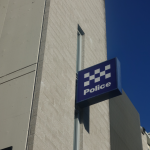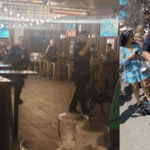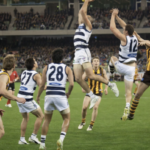How Reliable is Facial Recognition Evidence?

There have been numerous examples of where the use of ‘expert’ evidence has led to miscarriages of justice. And identification evidence is notoriously unreliable, resulting in the convictions of hundreds of innocent people in the US alone.
But what about experts who claim that they can identify a person based upon photos or CCTV footage?
Prosecutors often use facial recognition experts to identify offenders from images. But the reliability of that evidence was recently put to the test through a study aimed at determining whether these experts are any better than the rest of us at identifying people from images.
The Accuracy of Facial Recognition Experts
Cognitive psychologist Dr White and his colleagues studied 27 facial recognition experts to determine whether they can accurately match images to faces.
The experts were shown hundreds of images of people on a screen, for between 2 and 30 seconds each, and asked to match them to faces. A control group containing members of the general population went through the same process.
The experts got it wrong 7% of the time, whereas the general population got it wrong 15% of the time.
Dr White says that the difference was primarily due to the fact that the general population will use their memory of the face as a whole to make the comparison, whereas the experts focus on individual facial features.
Expert Evidence
A person’s opinion cannot normally be used as evidence in court. This is known as the ‘opinion rule’.
But section 79 of the Evidence Act 1995 (NSW) says that evidence based on a person’s ‘specialised knowledge’ – also known as ‘expert evidence’ – is an exception to the opinion rule. Subsection (1) states that:
“If a person has specialised knowledge based on the person’s training, study or experience, the opinion rule does not apply to evidence of an opinion of that person that is wholly or substantially based on that knowledge”.
This means that experts can testify about opinions that are largely based on their specialised knowledge.
Dangers of Expert Evidence
The potential problems of expert evidence were outlined by Justice Dawson in Murphy v R (1989) 167 CLR 9:
“The admission of such evidence carries with it the implication that the jury are not equipped to decide the relevant issue without the aid of expert opinion and thus, if it is wrongly admitted, it is likely to divert them from their proper task which is to decide the matter for themselves using their own common sense.”
Despite the dangers, prosecutors continue to regularly rely on expert evidence during jury trials.
Leading forensic science expert, Professor Garry Edmond, studied many ‘expert-witnesses’ in NSW courts in 2008, telling the ABC:
“I must say I was scandalised by the quality of the evidence and the claims being made by experts or so-called experts, who didn’t know whether they could actually do what they claimed or didn’t know how accurate they were.”
Particularly unreliable, according to Edmond, was evidence relating to blood-spatter patterns, fingerprints, voice comparison and images for identification.
He found that:
“There is very little in the way of testing of those practices and we know very little about their value as evidence.”
Is Facial Recognition Evidence Admissible?
The question of whether ‘facial mapping’ is admissible as identification evidence was considered by the New South Wales Court of Criminal Appeal (NSWCCA) in R v Tang (2006) 161 Crim R 377.
In that case, the court compared ‘facial mapping’ with fingerprint evidence. It found that fingerprint evidence has a scientific basis for identifying people, whereas facial mapping has no such scientific basis.
Accordingly, the court found that it is not permissible for an ‘expert’ in ‘facial mapping’ or ‘body mapping’ to give an opinion that the accused is identical to the person in a video or photograph.
In the case of Honeysett v Regina [2013] NSWCCA 135, the NSWCCA found that evidence that the accused has features in common with a person in a video or photograph was admissible, as long as no evidence was given to suggest that the person depicted was similar, or identical, to the accused. However, that decision was overturned by the High Court on appeal, which found that such evidence is not admissible in court.
The current state of the law is therefore that facial recognition evidence is not admissible, which is perhaps fortunate given the potentially dire consequences of an incorrect match.






